AICRAFT + ResearchSat to manage biological experiments in space
AICRAFT and ResearchSat have signed an MoU to use edge computing technology to assist with biological and scientific experiments on-orbit.
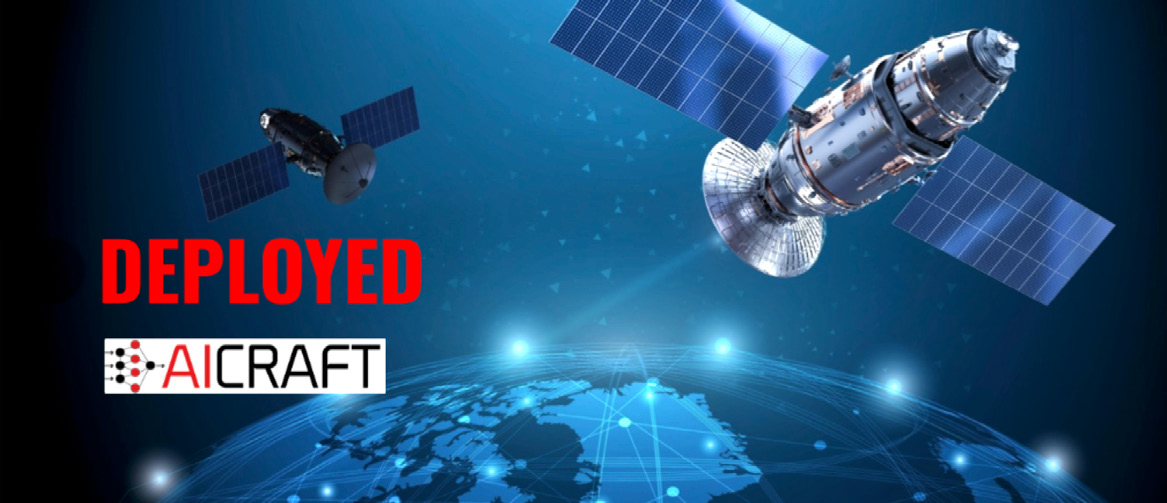
AICRAFT and ResearchSat will work together to use edge computing modules designed and manufactured by AICRAFT to facilitate onboard data analysis and data reduction of biological experiments conducted by ResearchSat on-orbit.
The objective is for AICRAFT to supply tailored edge computing devices to support on-orbit management of biomanufacturing computational workloads as ResearchSat scales up and diversifies its operations.
ResearchSat offers microgravity satellite services for medical and material sciences research to improve development by examining material, chemical and clinical properties with the benefits of being in space. The two companies are planning a sub-orbital demonstrator mission in December 2024.

AICRAFT’s CEO, Dr. Tony Scoleri said, “This partnership is important for us to demonstrate the efficiency of our edge computing module applied to various optical data gathered from biological experiments. On-orbit data analysis is crucial to automate task management and reduce the amount of data without compression prior to transmitting down to Earth.”
ResearchSat’s Founder and CEO, RaviTeja Duggineni, said, “This partnership is vital to ResearchSat, as it helps to develop microgravity-bio data sets and to fine-tune the satellite operations which lay the foundation to space bioreactor. This innovative bioreactor is set to revolutionize regenerative medicine, personalized medication, and in-space therapeutic manufacturing, heralding a new era in space-based medical solutions.”
Aurora to deliver a Plasma Brake for SpeQtral’s smallsat
Aurora Propulsion Technologies, together with SpeQtral, last month signed a deal for the former to deliver a Plasma Brake for SpeQtral’s next satellite.

The Plasma Brake works by deploying a charged microtether that interacts with the LEO plasma environment, creating a drag force.
This allows it to generate a small amount of thrust continuously and indefinitely, also on higher orbits up to 1000 km where aerodynamic drag is not an option.
The SpeQtral-1 mission will be SpeQtral’s second quantum key distribution (QKD) satellite, serving as a pathfinder commercial demonstrator and defining future QKD services.
The mission follows the SpeQtre technology demonstrator mission, itself built on technologies demonstrated on the 2019 SpooQy-1 CubeSat.
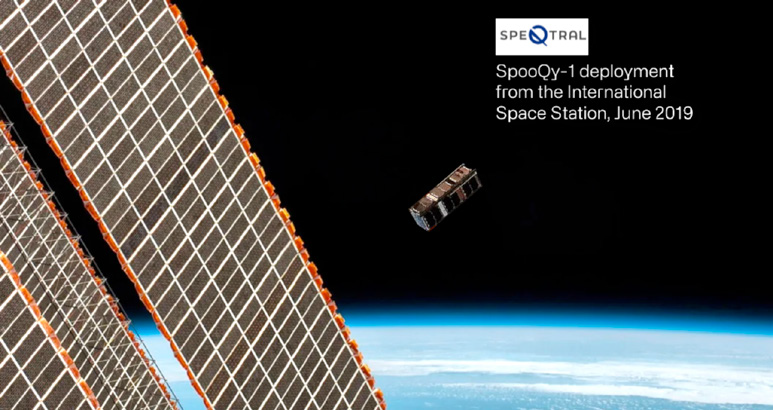
The SpeQtral-1 satellite is one of the first in the world to contain both BB84 and BBM92 quantum payloads in a CubeSat form factor.
Operating at an altitude of 500 kms in SSO, SpeQtral-1 can provide quantum keys to any location on Earth.
The BBM92 payload offers unparalleled security, and the BB84 payload offers higher key rates allowing seamless integration with fiber QKD networks around the globe.
SpeQtral-1 brings cutting-edge quantum communication technologies, enabling partners and customers to securely transmit their data with highest levels of encryption.
Perttu Yli-Opas, the CEO of Aurora Propulsion Technologies, said, “This mission is a great example of a business-oriented satellite that simply must have a deorbiting solution with a minimal footprint – which we’re more than happy to provide.”
John Deere + SpaceX to expand rural connectivity for farmers
Deere & Company (NYSE: DE) has entered into an agreement with SpaceX to provide SATCOM service to farmers — using the Starlink network, this solution will allow farmers facing rural connectivity challenges to fully leverage precision agriculture technologies.

This partnership, an industry first, will enable John Deere customers to be more productive, profitable, and sustainable in their operations as they continue to provide food, fuel, and fiber for their communities and a growing global population.
The SATCOM solution will connect new and existing machines through satellite internet service and ruggedized satellite terminals. This will fully enable technologies, such as autonomy, real-time data sharing, remote diagnostics, enhanced self-repair solutions, and Machine-to-Machine (M2M) communication, all of which help farmers work more efficiently while minimizing downtime.
John Deere’s SATCOM solution will leverage SpaceX’s Starlink satellite internet constellation. To activate this solution, John Deere dealers will install a ruggedized Starlink terminal on compatible machines, along with a 4G LTE JDLink modem to connect the machine to the John Deere Operations Center.
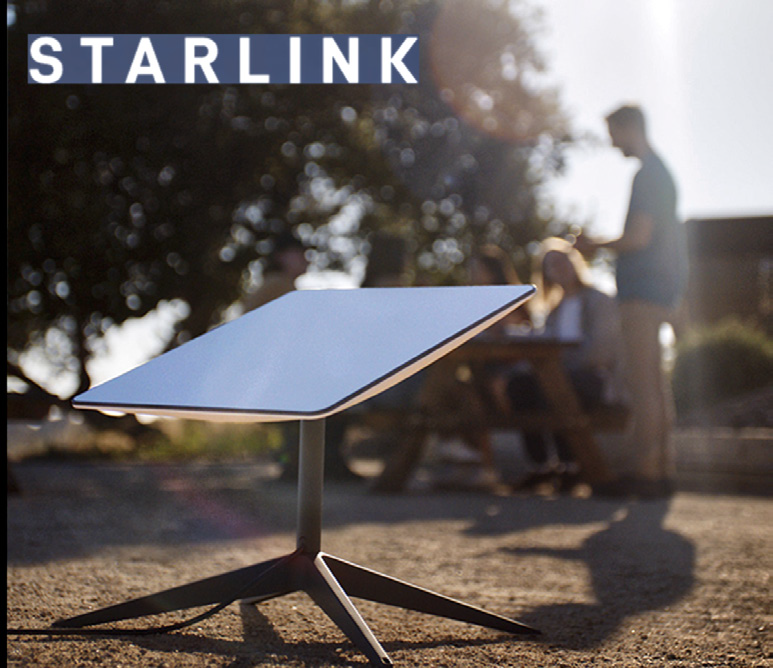
The SATCOM solution will initially be available through a limited release in the United States and Brazil starting in the second half of 2024.
“The value of connectivity to farmers is broader than any single task or action. Connectivity unlocks vast opportunities that were previously limited or unavailable,” said Aaron Wetzel, Vice President of Production and Precision Ag Production Systems at John Deere. “For example, throughout the year, farmers must complete tasks within extremely short windows of time. This requires executing incredibly precise production steps while coordinating between machines and managing machine performance. Each of these areas are enhanced through connectivity, making the entire operation more efficient, effective, and profitable.”
“John Deere has led the agriculture equipment industry for more than two decades with satellite- based precision guidance technology,” said Jahmy Hindman, Senior Vice President & Chief Technology Officer at John Deere. “Now, we are bringing satellite communications service to the farm at scale so farmers with cellular coverage challenges can maximize the value of connectivity to their operations. The SATCOM solution unlocks the John Deere tech stack so every farmer can fully utilize their current precision agriculture technology in addition to the new innovative solutions they will deploy in the future. We initiated this process with a fierce focus on delivering value to our customers, and this partnership ensures we have a solution that meets their needs today and in the future.”
European Space Agency’s zero debris approach
Space debris is defined as “All non-functional, human-made objects, including no longer functioning spacecraft or fragments of them, in orbit or reentering Earth’s atmosphere.”

Since the start of the space age in 1957, humankind has launched almost 50,000 tons of material into space. Some of that has returned, but today about 10,000 tons remain in orbit and, on average, one object returns to Earth every week, uncontrolled.
These numbers are rapidly increasing. More satellites have been launched in the last two years than the entire six decades of space exploration.
Earth’s space environment is now filled with millions of bits of fast-moving debris, threatening our future in space. A collision with a 1 cm particle travelling 10 km/s (of which there are about a million in orbit) releases the same energy as a small car crashing at 40 km/h.
If current behaviors and trends in orbit continue, crucial orbital regions will become entirely unusable. It’s time to act.
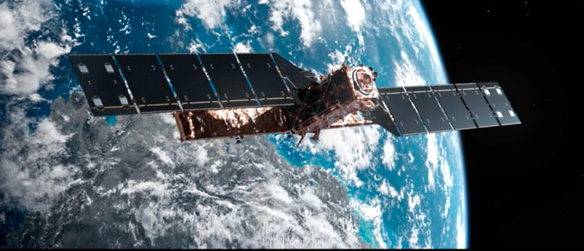
ESA’s ‘Time To Act’ video
How much debris is it OK to create? Ideally, zero debris.
Building on a decade of ESA-wide collaborative work, the Agency has taken the lead in space sustainability by introducing the ‘Zero Debris approach’: ESA’s bold goal to significantly limit the production of debris in Earth and Lunar orbits by 2030 for all future missions, programs and activities.
“We are seeing a dramatically increased use of space, but still insufficient technology to prevent the risks that follow. Our aim to become debris neutral in just a few years will require clearing precious Earth orbits once a mission is complete, and if the mission fails to do this, it must be actively removed by dedicated vehicles. We are aiming for rules that compare to every national park on Earth — what you bring in you must take with you when you leave,” said Holger Krag, ESA’s Head of Space Safety.
ESA’s New Standard For Space Exploration
As part of the Zero Debris approach, ESA has updated its debris mitigation requirements and standards that will govern how the Agency’s missions are designed, built, flown and disposed of, but also setting the rules for any company or institution that works with ESA on its missions.
In Autumn of 2022, a large-scale study was carried out by ESA’s Concurrent Design Facility involving all ESA sites across Europe as well as some 270 ESA experts, industry, governmental agencies and academia. The study put forward eight recommendations to reach Zero Debris by 2030, which form the foundation of the recently published ‘ESA Space Debris Mitigation Requirements’.
“ESA has always complied with the International Organization for Standardization (ISO) requirements when it comes to space debris mitigation – and we will continue to do so. However, with the Zero Debris approach we go further still. Our 2030 target means newer, bolder requirements and technologies are needed, and we hope that ISO — and so the global space community — will evolve in the same way,” said Paloma Villar, Head of ESA’s Independent Safety Office.
Eight Recommendations For Zero Debris By 2030
1) Guarantee successful disposal
Ensuring the safe disposal of space objects is of utmost importance. ‘Self disposal’ through atmospheric reentry or reorbiting to a safe altitude should be verified in advance of a mission’s launch, with a probability of success higher than a certain minimum threshold (currently set at 90%). Critical disposal functions – such as enough fuel for maneuvers, functioning thrusters, etc. — should be continuously monitored. Missions should also include interfaces that would help the mission be more easily removed from orbit, should self-disposal fail. In parallel, reliable and affordable Active Debris Removal services need to be demonstrated by 2030. A first respective mission is already in preparation.
2) Improve orbital clearance
By reducing the time an object is in orbit, the smaller the chance that it will collide with another object and create further debris. Current debris mitigation guidelines say that a satellite or rocket body in low-Earth orbit should not remain in orbit longer than 25 years after its end of life. ESA’s Zero Debris recommendations propose that this time is reduced to below five years, and requires that the cumulative probability of collision with any debris larger than 1 cm in size is below 1 in 1000 for the entire period of a mission’s life, until it reenters Earth’s atmosphere.
3) Avoid in-orbit collisions
Collision avoidance – maneuvering a satellite out the way of potential collision – is now a regular part of flying missions in LEO. It comes at a cost as fuel is required and instruments are often turned off, meaning data is lost. With the dramatic rise of space activity and the growth in the amount of debris in orbit, the number of collision alerts received every week and maneuvers required is also growing. Improved collision avoidance strategies – using automation, traffic coordination, communication protocols and more – are needed as the risk of collision increases. How do we tackle the debris problem, to secure the sustainability of space long term? How do we tackle the debris problem, to secure the sustainability of space long term?
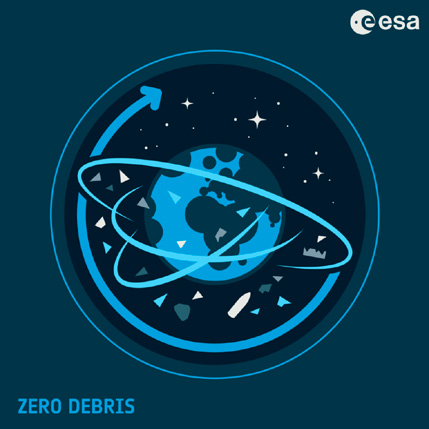
4) Avoid internal break-ups
Enhanced health monitoring and robust passivation techniques should be implemented to prevent satellites breaking up from within, caused by system explosions from leftover fuel or energy from solar panels.
5) Prevent intentional release of space debris
Recommendations emphasize that the intentional release of any ‘Mission Related Object’ – such as protective covers, lens caps, rocket fairings – should be avoided to prevent further debris growth.
6) Improve on-ground casualty risk assessment
Standardized tools and methodologies should be developed for assessing the casualty risk, on the ground, of reentering objects, as well as for verifying assessments of how a mission will demise. Consideration of on-the-ground casualty risk for all Mission Related Objects released by a launcher is also recommended.
7) Guarantee Dark and Quiet skies
Measures should be identified and implemented to minimize the impact of space objects on optical and infrared astronomy, as well as radio astronomy, to maintain dark and quiet skies.
8) Beyond the protected regions
Other orbits, such as those used by Global Navigation Satellite System (GNSS) constellations and lunar orbits, should also be considered and protected to ensure their long-term sustainability. Adapted Zero Debris recommendations should be formulated and applied beyond low-Earth orbit and Geostationary orbit. Sentinel-1A fragment impact in space Sentinel-1A fragment impact in space
“If you love space, you must love clean space. The build-up of debris in orbit poses significant risks to satellites, crewed missions and the overall sustainability of our space environment. Embracing a Zero Debris approach is definitely not an idealistic concept but an absolute necessity for the future of the space industry. It is just the right thing to do to leave our environment in a clean state for the future,” siad Luisa Innocenti, ESA’s Head of Clean Space.
Innovation Is Needed To Solve The Debris Problem
While ESA is paving the way in pursuing a Zero Debris approach to promote a sustainable future in orbit, it will have ripple effects across the space sector. ESA’s pro-active initiative will speed up the development of technologies needed to protect our skies and orbits while inspiring partners to do the same. Only a broad engagement of like minded actors and a collaborative effort can allow the Zero Debris approach to accomplish its goal of guaranteeing a sustainable use of Earth orbits.
To provide the community with a centralized reference for approaches and contributions from different stakeholders, enabling a Zero Debris future, ESA is currently facilitating the production of the ‘Zero Debris Technical Booklet.’ It will contain a comprehensive list of needs, technical solutions and contributions, crowdsourced through the Zero Debris community.
Space is a shared resource, and orbits around our planet are now considered a limited natural resource like water and energy on Earth. As such, it will take action across the globe to secure our skies.
Under the umbrella of the Agency’s ‘Protection of Space Assets’ Accelerator, ESA has kicked off the Zero Debris Charter that brings together the diverse international space community to collaborate and co-create this sustainable future, developing a precise and common vision of space sustainability for 2030 and beyond. Next steps
The next step is to make these recommendations a reality, continuing to study the impact of space technology on our environment and building the technologies that do not exist today but are needed for a responsible, sustainable use of space by 2030.
While the Zero Debris approach sets out the Agency’s vision for the near future, the “ESA Space Debris Mitigation Requirements” is the internal manual for how it will get there. Globally, the Zero Debris Charter is written for and by a diverse community in Europe and beyond that is committed, together, to caring for our space environment now — and for future generations.
Exolaunch to deploy four Spire-built smallsats
Exolaunch, a global provider of launch mission management, integration, and deployment services, will deploy four, Canadian, NorthStar Earth & Space satellites, built by Spire Global, via a Rocket Lab Electron launch vehicle.
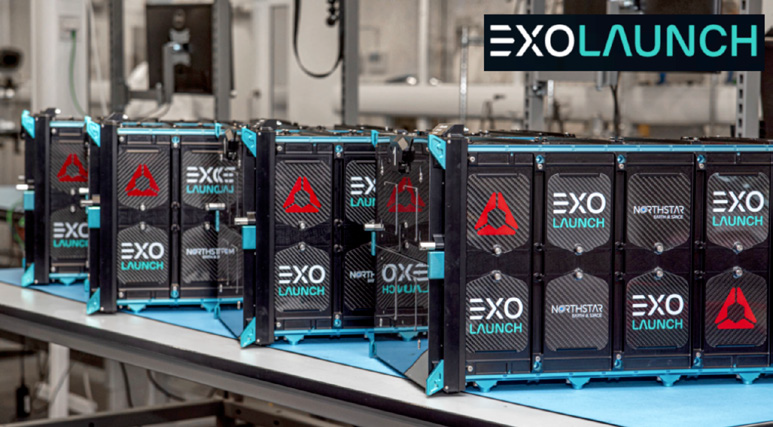
Exolaunch will provide separation systems, deployment, and integration services to ensure mission success for the first tech demo satellites for NorthStar’s commercial, space-based Space Situational Awareness (SSA) services.
This initial cluster of four satellites will create a space-based SSA constellation, with NorthStar being the first to simultaneously monitor all near- Earth orbits from space, delivering advanced services with precise information for resident space
object detection, tracking, orbit determination, collision avoidance, navigation, and proximity alerts. Smallsat integration into an Exolaunch EXOpod Nova deployer. Photo is courtesy of Spire.
The integration of four 16U satellites into the EXOpod Nova deployers was completed successfully in December at Spire’s Glasgow, Scotland, facility, marking a significant milestone in the collaborative efforts between Exolaunch and Spire. This achievement underscores Exolaunch’s commitment to excellence, proven capabilities to deliver reliable separation system hardware, and industry-leading launch mission management and integration services.
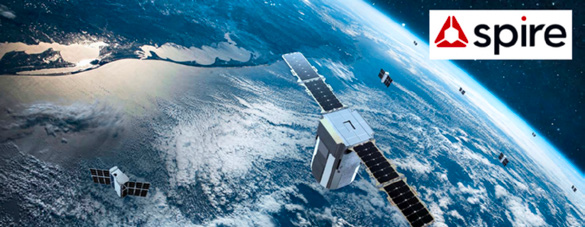
Exolaunch’s EXOpod Nova is a next-generation deployer based on customer specifications for an expanded envelope cubesat. The EXOpod Nova increases the allowable satellite mass by up to 30 percent and the available side panel volume by a factor of four compared to traditional cubesat deployers, enabling satellite manufacturers to build more robust and capable technologies while reducing costs.
The next phase of integration was completed over the first week of January in Māhia, New Zealand, where Exolaunch oversaw the satellite integration with Rocket Lab’s Electron launch vehicle. This process is a key step forward in preparing for launch from the same site, slated for no earlier than the 18th of January 2024.
“We are delighted to reach new heights in our established partnership with Spire, proud to support NorthStar’s first mission in their new constellation, and pleased to collaborate once again with the Rocket Lab team,” said Exolaunch’s chief commercial officer, Jeanne Allarie. “The smooth integration of satellites with the industry-leading EXOpod Nova deployers demonstrates our dedication to continuous innovation and proven reliability. We look forward to a successful launch on Electron.”
“Spire’s dedication to innovation, coupled with Exolaunch’s proven capabilities, marks a significant leap forward in advancing the capabilities of NorthStar’s constellation,” said Frank Frulio, the general manager of Space Services at Spire. “As we embark on this groundbreaking mission, the collaboration between Spire, Exolaunch, NorthStar, and Rocket Lab exemplifies the seamless integration of expertise, technology and dedication to shaping the future of space services.”
“Exolaunch has played an important role in the launch preparations for NorthStar’s first block of 4 satellites,” said David Saint-Germain, NorthStar’s Chief Operating Officer. “Teamwork and dedication to detail and precision make all the difference. Exolaunch has been a real asset to our inaugural launch campaign.”
Kinéis to deploy IoT constellation
French satellite operator Kinéis, a global connectivity provider and pioneer of the new French space sector, raised a historic €100 million in 2020. Since then, its teams have been working on the design of the Kinéis system, a revolution in satellite-based Internet of Things (IoT). In 2024, Kinéis is preparing for a decisive stage in the roll-out of its system.
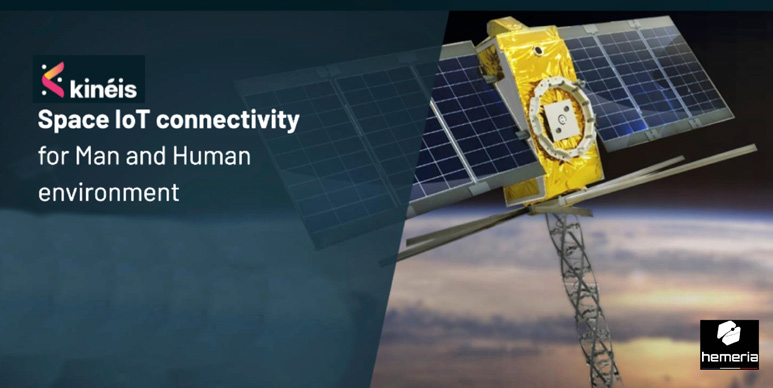
Between June 10th and July 9th, 2024, the Toulouse-based company will carry out the first of five launches to put into orbit its constellation of 25 nanosatellites, the first European constellation dedicated to IoT. This first launch will take place with Rocket Lab’s Electron launcher from the Pacific coast of New Zealand’s North Island.
Almost 90% of the Earth’s surface is not covered by terrestrial networks (black spots). Kinéis’ spatial IoT provides a direct and unique response to complement these networks. Kinéis’ mission is to connect and locate any object, anywhere on the Earth’s surface (including black spots), and to guarantee the transmission of data from the connected object to users anywhere in the world in near-real time, at low bit rates (small messages), with very low energy consumption.
To accomplish this mission, Kinéis has inherited more than 40 years’ expertise in data collection from space, thanks to CNES (French space agency) and CLS, the project’s founders.
Kinéis operates for a global market in areas that represent major challenges for human life and the environment: agriculture, early detection of forest fires, water resource management (flooding, drought, pollution, distribution), traceability of wild and farmed animals, monitoring of energy infrastructures and networks (leak detection and monitoring), transport and logistics monitoring, monitoring of commercial and scientific maritime activities, security (search and rescue) and defence.
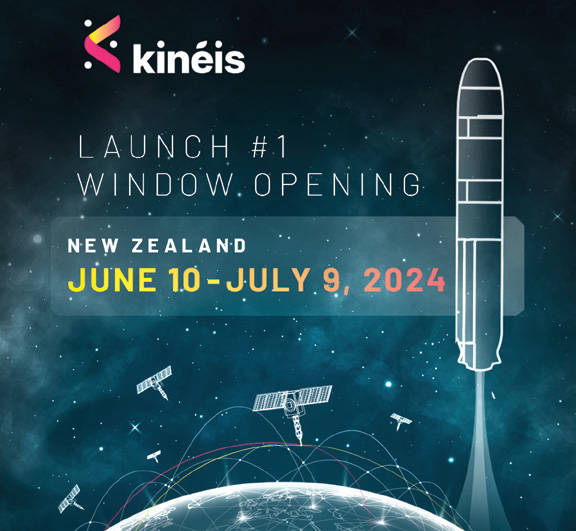
A top-class cast from the Toulouse space ecosystem is supporting Kinéis in this satellite IoT revolution, including Hemeria (development of the platform and industrialization of the satellites), Thales Alenia Space, Syrlinks from the Safran group (payload and mission center) and Comat (antennas). CNES has also provided unfailing support and expertise to Kinéis from the start of the project.
The project is also financially backed by Bpifrance, CLS and other major players, such as BNP Paribas Développement, CELAD, Maison Julien and Kelly Dassault, and Ethics Group.
Commenting on the announcement of the first launch, Alexandre Tisserant, Kinéis CEO, said, “I’m very pleased to announce the launch window for this launch, which initiates the placing in orbit of the Kinéis constellation, the first European constellation dedicated to the Internet of Things. With 5 launches planned in the coming months, Kinéis is in the final stage of bringing this unique project to fruition, four years after raising its historic funds. All our teams are mobilized to make this event a technical, operational and commercial success.“
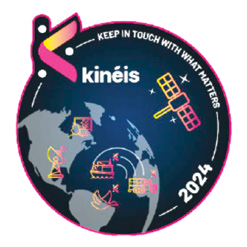
2024: the Kinéis Space Olympiad — the first half-year:
• January: announcement of the launch window for the 1st launch
• February: the nanosatellites are industrialized
• March: press visit to the manufacturer in Toulouse
• April: announcement of the final launch date / departure of the 1st satellites for New Zealand
• May: campaign to prepare the5 satellites in New Zealand for the 1st launch. The 5 launches needed to deploy the Kinéis constellation are then scheduled over several months, star ting in late spring 2024.


